Animal NDC 30798-927-78 Ivermectin Pour-on For Cattle
Ivermectin
Animal Product Information
| Field Name | Field Value |
|---|---|
| Animal NDC Code | 30798-927-78 |
| Proprietary Name | Ivermectin Pour-on For Cattle What is the Proprietary Name? The proprietary name also known as the trade name is the name of the product chosen by the medication labeler for marketing purposes. |
| Non-Proprietary Name | Ivermectin What is the Non-Proprietary Name? The non-proprietary name is sometimes called the generic name. The generic name usually includes the active ingredient(s) of the product. |
| Labeler Name | Durvet |
| Product Type | Otc Animal Drug |
| Usage Information |
|
| Active Ingredient(s) |
|
| Marketing Category | ANADA - ABBREVIATED NEW ANIMAL DRUG APPLICATION What is the Marketing Category? Product types are broken down into several potential Marketing Categories, such as NDA/ANDA/BLA, OTC Monograph, or Unapproved Drug. One and only one Marketing Category may be chosen for a product, not all marketing categories are available to all product types. Currently, only final marketed product categories are included. The complete list of codes and translations can be found at www.fda.gov/edrls under Structured Product Labeling Resources. |
| FDA Application Number | ANADA200340 What is the FDA Application Number? This corresponds to the NDA, ANDA, or BLA number reported by the labeler for products which have the corresponding Marketing Category designated. If the designated Marketing Category is OTC Monograph Final or OTC Monograph Not Final, then the Application number will be the CFR citation corresponding to the appropriate Monograph (e.g. “part 341”). For unapproved drugs, this field will be null. |
Ivermectin Pour-on For Cattle Images
-

image description - LBDUTP332ON disposal rISS21XB01FP
-

LBDUTP332ON residue warning rISS21XB01FP
-

LBDUTP332ON DU logo rISS21XB01FP
-

LBDUTP332ON eye clock rISS21XB01FP
-

LBDUTP332ON american flag rISS21XB01FP
-
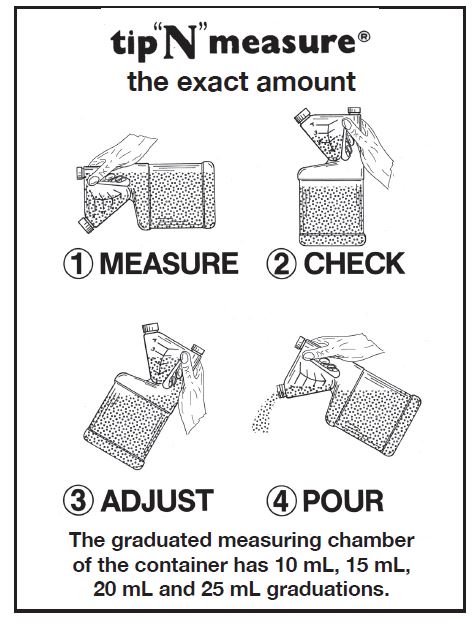
image of tip n measure diagram - TNM diagram
-
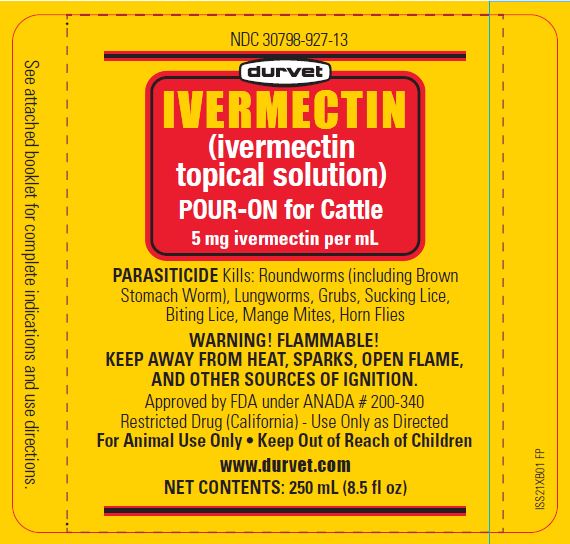
image of 250 mL bottle base label - LBDUTP330ON Base rISS21XB01FP
-

image of 250 mL bottle onsert label - LBDUTP330ON onsert rISS21XB01FP
-
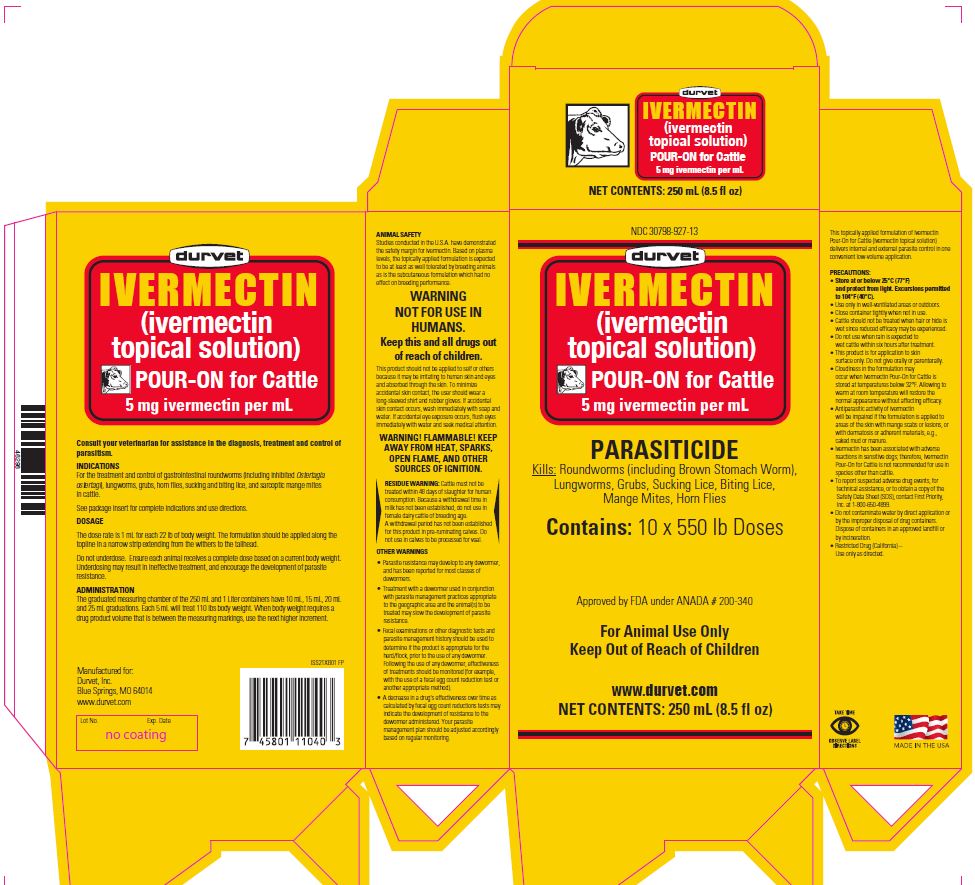
image of 250 mL carton label - PBXDUTP330 rISS21XB01FP
-
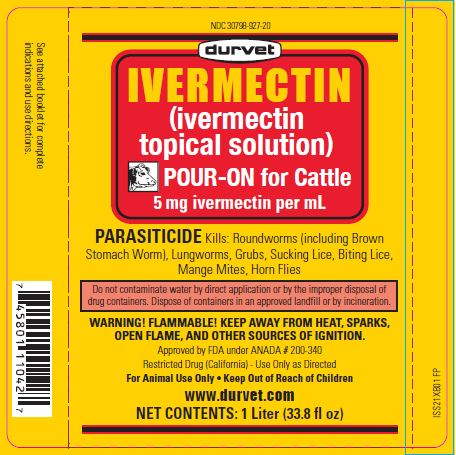
LBDUTP331ON base rev ISS21XB01FP
-
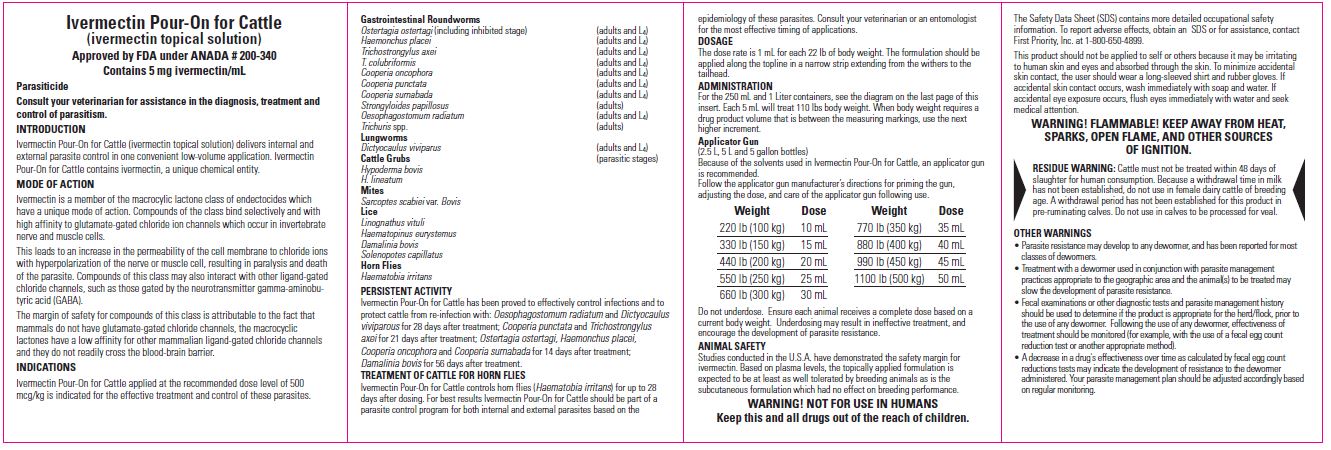
LBDUTP331ON onsert panels 1 to 4 rev ISS21XB01FP
-
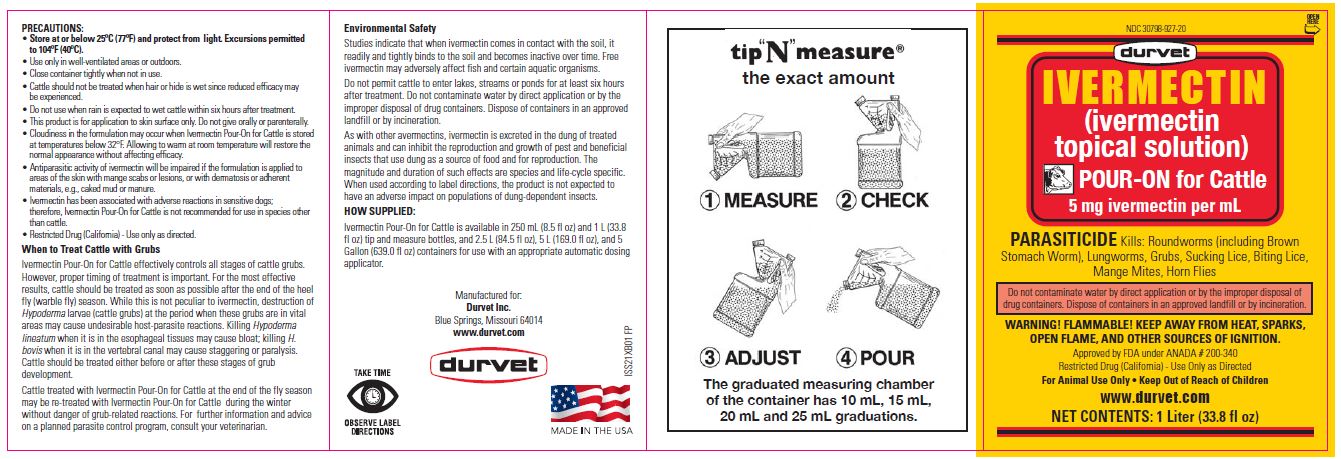
LBDUTP331ON onsert panels 5 to 8 rev ISS21XB01FP
-
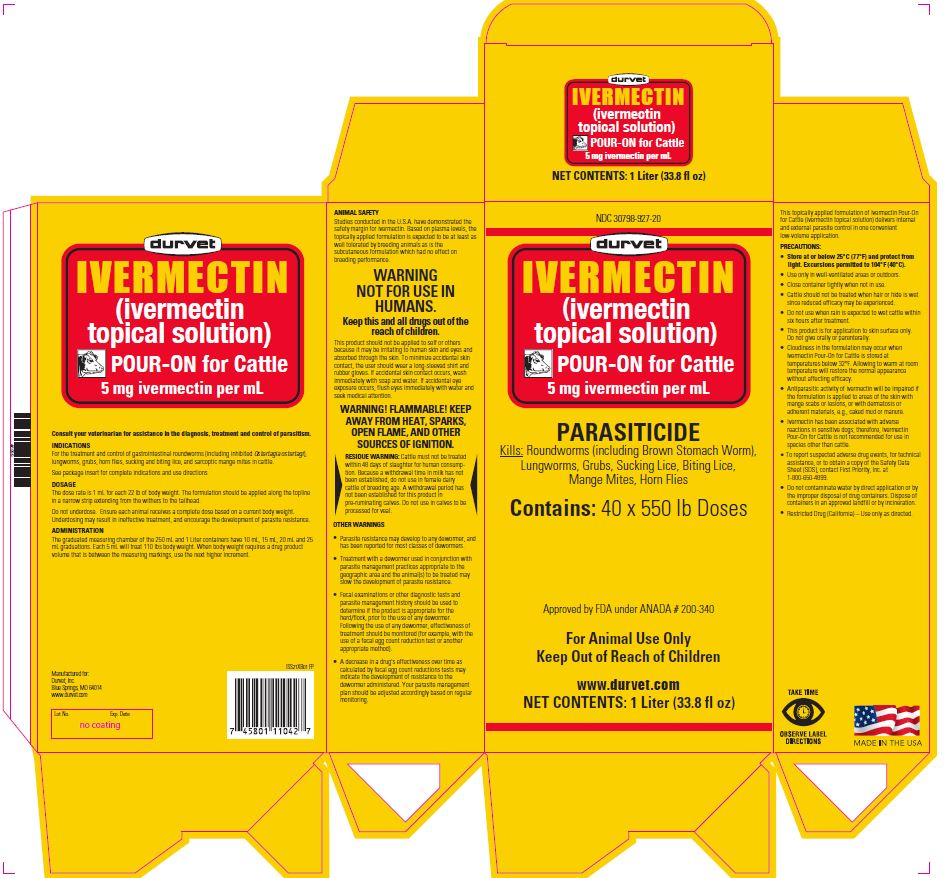
image of 1.0 L base individual carton label - PBXDUTP331TPNM revISS21XB01FP
-
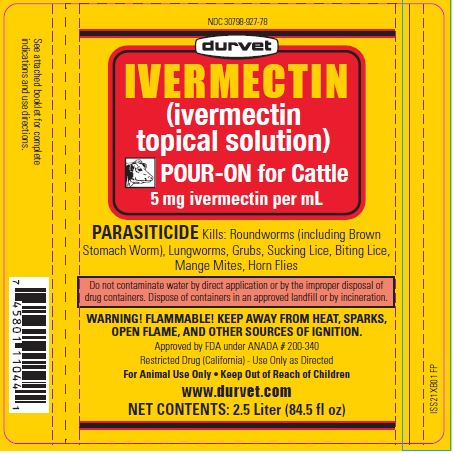
LBDUTP332ON base label rISS21XB01FP
-
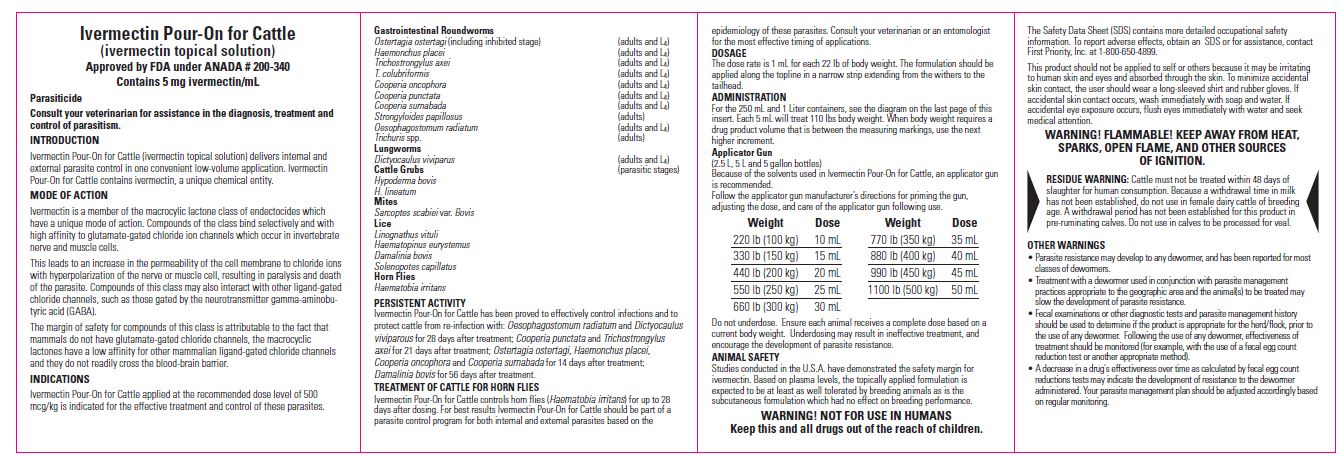
LBDUTP332ON side 1 rISS21XB01FP
-
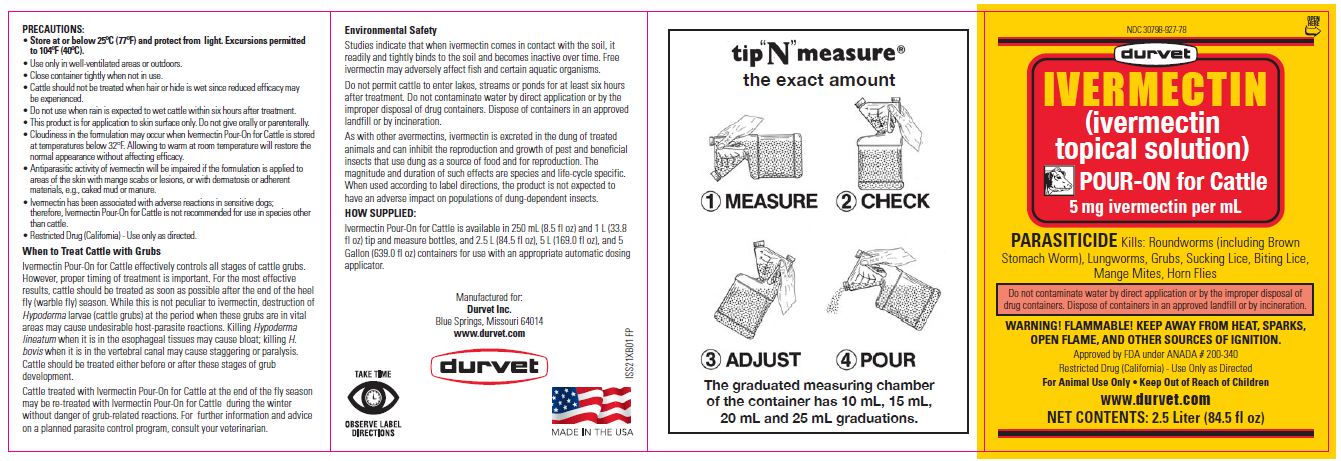
LBDUTP332ON side 2 rISS21XB01FP
-
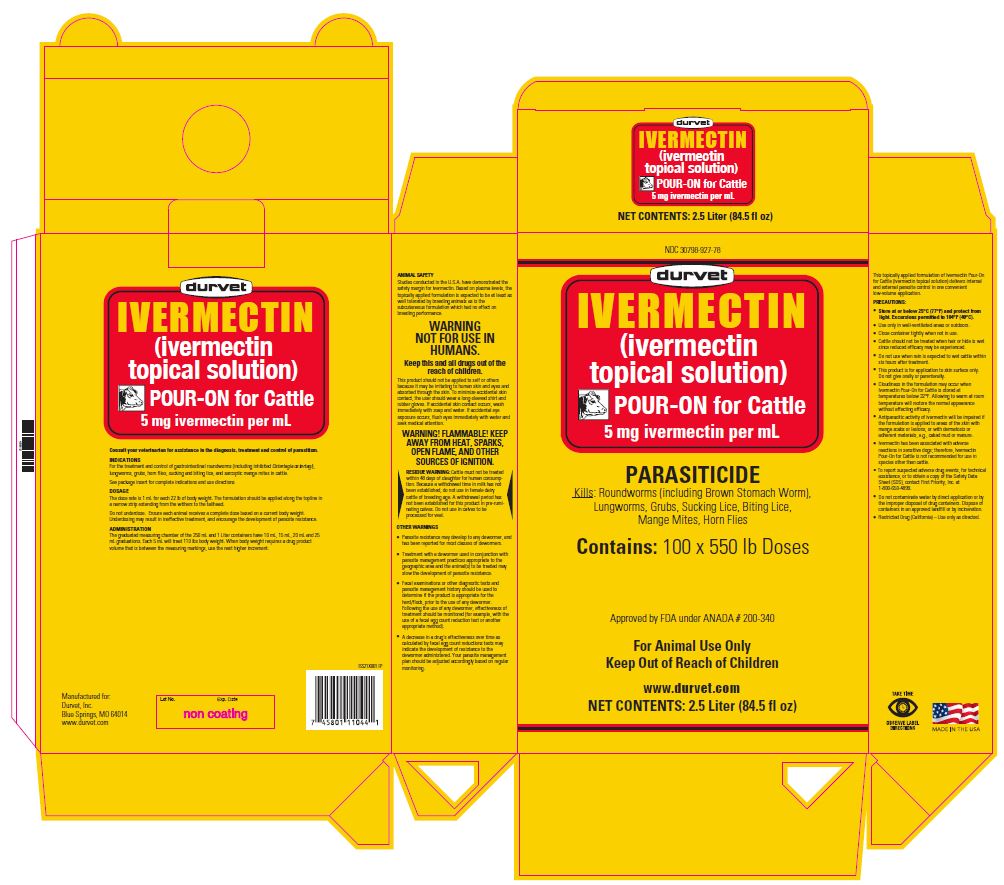
image of 2.5 L carton/case label - PBXDUTP332ON rISS21XB01FP
-
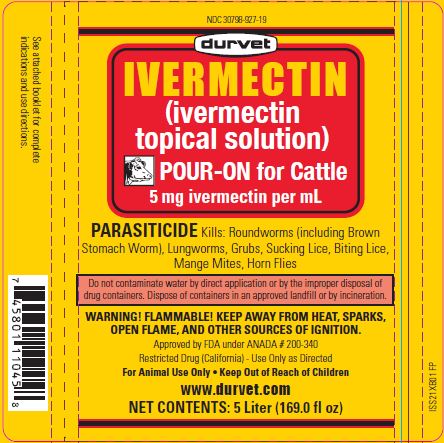
LBDUTP333ON base rISS21XB01
-
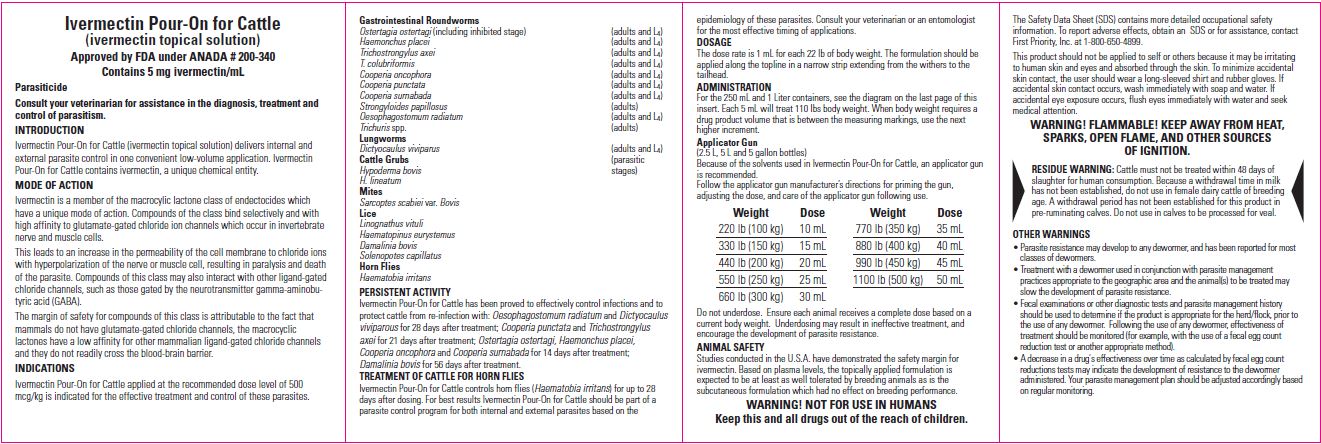
LBDUTP333ON side 1 rISS21XB01
-
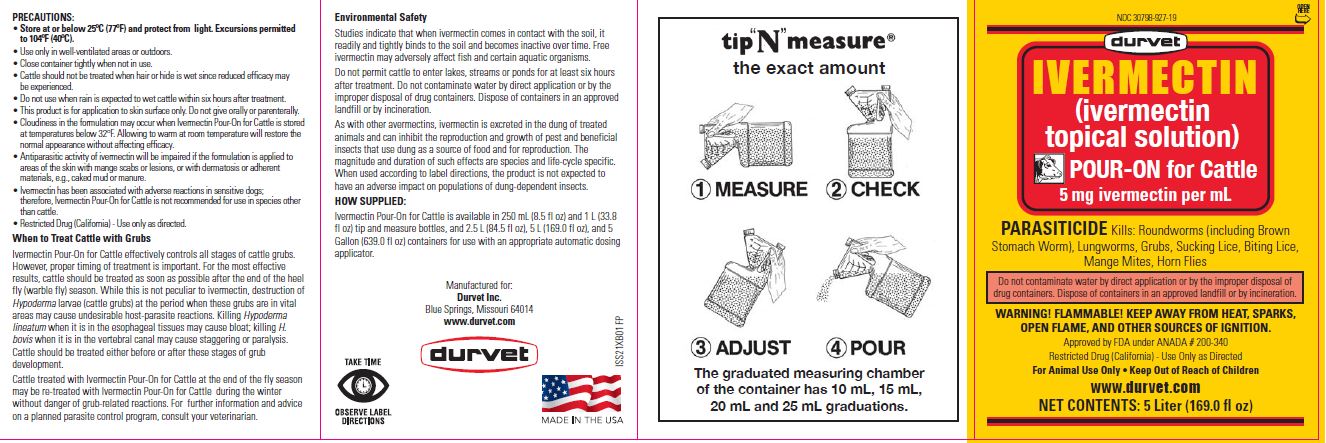
LBDUTP333ON side 2 rISS21XB01
-
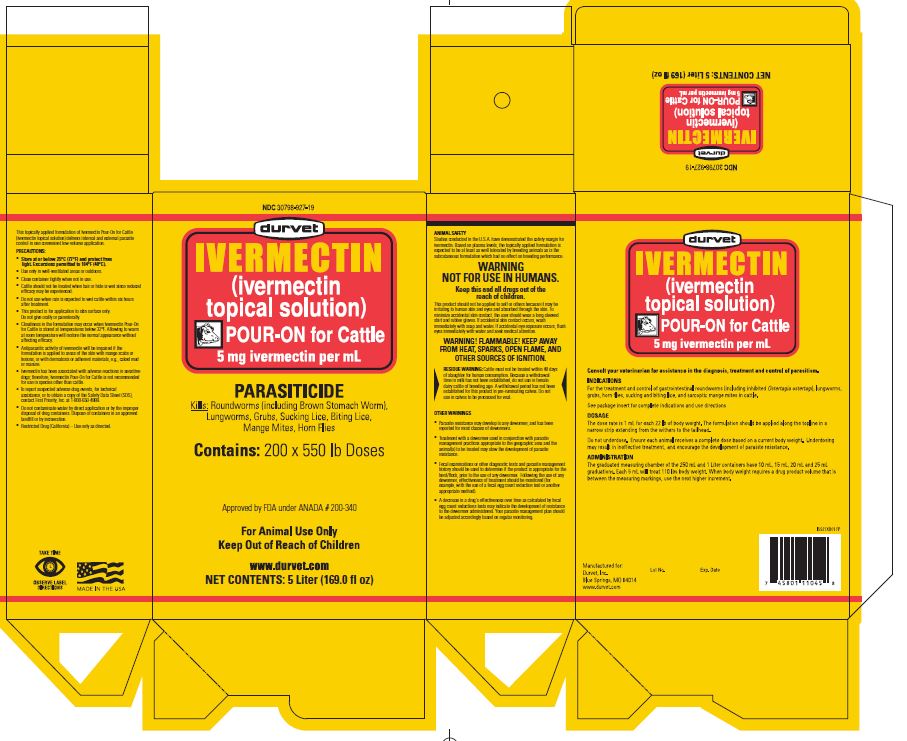
image of 5.0 L carton label - PBXDUTP333 rISS21XB01FP
Ivermectin Pour-on For Cattle Animal Product Labeling Information
The product labeling information includes all published material associated to a drug. Product labeling documents include information like generic names, active ingredients, ingredient strength dosage, routes of administration, appearance, usage, warnings, inactive ingredients, etc.
Table of Contents
- Other Safety Information
- Otc - Keep Out Of Reach Of Children
- Information For Owners/Caregivers
- Parasiticide
- Introduction
- Mode Of Action
- Indications
- Dosage
- Dosage & Administration
- Animal Safety
- Residue Warning
- Other Warnings
- Precautions:
- When To Treat Cattle With Grubs
- Environmental Safety
- How Supplied:
- Instructions For Use
- Diagram Of Device
- Net Contents: 250 Ml (8.5 Fl Oz)
- 1.0 L Container/Carton
- 2.5 L Container/Carton
- 5.0 L Container/Carton
Other Safety Information
PARASITICIDE Kills: Roundworms (including Brown Stomach Worm), Lungworms, Grubs, Sucking Lice, Biting Lice, Mange Mites, Horn Flies
WARNING! FLAMMABLE! KEEP AWAY FROM HEAT, SPARKS, OPEN FLAME, AND OTHER SOURCES OF IGNITION.
Approved by FDA under ANADA # 200-340
Restricted Drug (California) - Use Only as Directed
Otc - Keep Out Of Reach Of Children
For Animal Use Only • Keep Out of Reach of Children
Information For Owners/Caregivers
www.durvet.com
See attached booklet for complete indications and use directions.
Parasiticide
Consult your veterinarian for assistance in the diagnosis, treatment and control of parasitism.
Introduction
Ivermectin Pour-On for Cattle (ivermectin topical solution) delivers internal and external parasite control in one convenient low-volume application. Ivermectin Pour-On for Cattle contains ivermectin, a unique chemical entity.
Mode Of Action
Ivermectin is a member of the macrocylic lactone class of endectocides which have a unique mode of action. Compounds of the class bind selectively and with high affinity to glutamate-gated chloride ion channels which occur in invertebrate nerve and muscle cells.
This leads to an increase in the permeability of the cell membrane to chloride ions with hyperpolarization of the nerve or muscle cell, resulting in paralysis and death of the parasite.
Compounds of this class may also interact with other ligand-gated chloride channels, such as those gated by the neurotransmitter gamma aminobutyric acid (GABA).
The margin of safety for compounds of this class is attributable to the fact that mammals do not have glutamate-gated chloride channels, the macrocyclic lactones have a low affinity for other mammalian ligand-gated chloride channels and they do not readily cross the blood-brain barrier.
Indications
Ivermectin Pour-On for Cattle applied at the recommended dose level of 500 mcg/kg is indicated for the effective treatment and control of these parasites.
Gastrointestinal Roundworms
Ostertagia ostertagi (including inhibited stage) (adults and L4)
Haemonchus placei (adults and L4)
Trichostrongylus axei (adults and L4)
T. colubriformis (adults and L4)
Cooperia oncophora (adults and L4)
Cooperia punctata (adults and L4)
Cooperia surnabada (adults and L4)
Strongyloides papillosus (adults)
Oesophagostomum radiatum (adults and L4)
Trichuris spp. (adults)
Lungworms
Dictyocaulus viviparus (adults and L4)
Cattle Grubs (parasitic stages)
Hypoderma bovis
H. lineatum
Mites
Sarcoptes scabiei var. Bovis
Lice
Linognathus vituli
Haematopinus eurystemus
Damalinia bovis
Solenopotes capillatus
Horn Flies
Haematobia irritans
PERSISTENT ACTIVITY
Ivermectin Pour-On for Cattle has been proved to effectively control infections and to protect cattle from re-infection with: Oesophagostomum radiatum and Dictyocaulus viviparous for 28 days after treatment; Cooperia punctata and Trichostrongylus axei for 21 days after treatment; Ostertagia ostertagi, Haemonchus placei, Cooperia oncophora and Cooperia surnabada for 14 days after treatment; Damalinia bovis for 56 days after treatment.
TREATMENT OF CATTLE FOR HORN FLIES
Ivermectin Pour-On for Cattle controls horn flies (Haematobia irritans) for up to 28 days after dosing. For best results Ivermectin Pour-On for Cattle should be part of a parasite control program for both internal and external parasites based on the epidemiology of these parasites. Consult your veterinarian or an entomologist for the most effective timing of applications.
Dosage
The dose rate is 1 mL for each 22 lb of body weight. The formulation should be applied along the topline in a narrow strip extending from the withers to the tailhead.
ADMINISTRATION
For the 250 mL and 1 Liter containers, see the diagram on the last page of this insert. Each 5 mL will treat 110 lbs body weight. When body weight requires a drug product volume that is between the measuring markings, use the next higher increment.
Applicator Gun
(2.5 L, 5 L and 5 gallon bottles)
Because of the solvents used in Ivermectin Pour-On for Cattle, an applicator gun is recommended.
Follow the applicator gun manufacturer’s directions for priming the gun, adjusting the dose, and care of the applicator gun following use.
Dosage & Administration
| Weight | Dose |
| 220 lb (100 kg) | 10 mL |
| 330 lb (150kg) | 15 mL |
| 440 lb (200 kg) | 20 mL |
| 550 lb (250 kg) | 25 mL |
| 660 lb (300 kg) | 30 mL |
| 770 lb (350 kg) | 35 mL |
| 880 lb (400 kg) | 40 mL |
| 990 lb (450 kg) | 45 mL |
| 1100 lb (500 kg) | 50 mL |
Do not underdose. Ensure each animal receives a complete dose based on a current body weight. Underdosing may result in ineffective treatment, and encourage the development of parasite resistance.
Animal Safety
Studies conducted in the U.S.A. have demonstrated the safety margin for ivermectin. Based on plasma levels, the topically applied formulation is expected to be at least as well tolerated by breeding animals as is the subcutaneous formulation which had no effect on breeding performance.
WARNING! NOT FOR USE IN HUMANS
Keep this and all drugs out of reach of children.
The Safety Data Sheet (SDS) contains more detailed occupational safety information. To report adverse effects, obtain an SDS or for assistance, contact First Priority, Inc. at 1-800-650-4899.
This product should not be applied to self or others because it may be irritating to human skin and eyes and absorbed through the skin. To minimize accidental skin contact, the user should wear a long-sleeved shirt and rubber gloves. If accidental skin contact occurs, wash immediately with soap and water. If accidental eye exposure occurs, flush eyes immediately with water and seek medical attention.
WARNING! FLAMMABLE! KEEP AWAY FROM HEAT, SPARKS, OPEN FLAME, AND OTHER SOURCES OF IGNITION.
Residue Warning
Other Warnings
• Parasite resistance may develop to any dewormer, and has been reported for most classes of dewormers.
• Treatment with a dewormer used in conjunction with parasite management practices appropriate to the geographic area and the animal(s) to be treated may slow the development of parasite resistance.
• Fecal examinations or other diagnostic tests and parasite management history should be used to determine if the product is appropriate for the herd/flock, prior to the use of any dewormer. Following the use of any dewormer, effectiveness of treatment should be monitored (for example, with the use of a fecal egg count reduction test or another appropriate method).
• A decrease in a drug's effectiveness over time as calculated by fecal egg count reductions tests may indicate the development of resistance to the dewormer administered. Your parasite management plan should be adjusted accordingly based on regular monitoring.
Precautions:
• Store at or below 25°C (77°F) and protect from light. Excursions permitted to 104°F (40°C).
• Use only in well-ventilated areas or outdoors.
• Close container tightly when not in use.
• Cattle should not be treated when hair or hide is wet since reduced efficacy may be experienced.
• Do not use when rain is expected to wet cattle within six hours after treatment.
• This product is for application to skin surface only. Do not give orally or parenterally.
• Cloudiness in the formulation may occur when Ivermectin Pour-On for Cattle is stored at temperatures below 32°F. Allowing to warm at room temperature will restore the normal appearance without affecting efficacy.
• Antiparasitic activity of ivermectin will be impaired if the formulation is applied to areas of the skin with mange scabs or lesions, or with dermatosis or adherent materials, e.g., caked mud or manure.
• Ivermectin has been associated with adverse reactions in sensitive dogs; therefore, Ivermectin Pour-On for Cattle is not recommended for use in species other than cattle.
• Restricted Drug (California) - Use only as directed.
When To Treat Cattle With Grubs
Ivermectin Pour-On for Cattle effectively controls all stages of cattle grubs. However, proper timing of treatment is important. For the most effective results, cattle should be treated as soon as possible after the end of the heel fly (warble fly) season. While this is not peculiar to ivermectin, destruction of Hypoderma larvae (cattle grubs) at the period when these grubs are in vital areas may cause undesirable host-parasite reactions. Killing Hypoderma lineatum when it is in the esophageal tissues may cause bloat; killing H. bovis when it is in the vertebral canal may cause staggering or paralysis. Cattle should be treated either before or after these stages of grub development.
Cattle treated with Ivermectin Pour-On for Cattle at the end of the fly season may be re-treated with Ivermectin Pour-On for Cattle during the winter without danger of grub-related reactions. For further information and advice on a planned parasite control program, consult your veterinarian.
Environmental Safety
Studies indicate that when ivermectin comes in contact with the soil, it readily and tightly binds to the soil and becomes inactive over time. Free ivermectin may adversely affect fish and certain aquatic organisms.
Do not permit cattle to enter lakes, streams or ponds for at least six hours after treatment. Do not contaminate water by direct application or by the improper disposal of drug containers. Dispose of containers in an approved landfill or by incineration.
As with other avermectins, ivermectin is excreted in the dung of treated animals and can inhibit the reproduction and growth of pest and beneficial insects that use dung as a source of food and for reproduction. The magnitude and duration of such effects are species and life-cycle specific. When used according to label directions, the product is not expected to have an adverse impact on populations of dung-dependent insects.
How Supplied:
Ivermectin Pour-On for Cattle is available in 250 mL (8.5 fl oz) and 1 L (33.8 fl oz) tip and measure bottles, and 2.5 L (84.5 fl oz), 5 L (169.0 fl oz), and 5 Gallon (639.0 fl oz) containers for use with an appropriate automatic dosing applicator.
Instructions For Use
Manufactured for:
Durvet Inc.
Blue Springs, Missouri 64014
www.durvet.com
* The information on this page is for an ANIMAL PRODUCT, please review the complete disclaimer below.